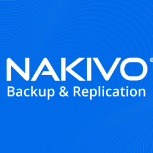Forums
-
General Discussions
-
Deployment
-
Configuration
-
- 56
- posts
-
- 49
- posts
-
- 217
- posts
-
-
Backup
-
- 83
- posts
-
- 194
- posts
-
- 20
- posts
-
- 115
- posts
-
- 48
- posts
-
- 22
- posts
-
- 51
- posts
-
- 16
- posts
-
- 49
- posts
-
-
Replication
-
- 14
- posts
-
- 4
- posts
-
- 4
- posts
-
- 9
- posts
-
-
Recovery
-
- 8
- posts
-
- 13
- posts
-
- 18
- posts
-
- 8
- posts
-
-
Integration
-
- 20
- posts
-
-
Automation
-
- 36
- posts
-
-
Multi-tenant Mode
-
- 20
- posts
-

.thumb.png.06d8fba2efcf99a2e716d853feb8fb0f.png)